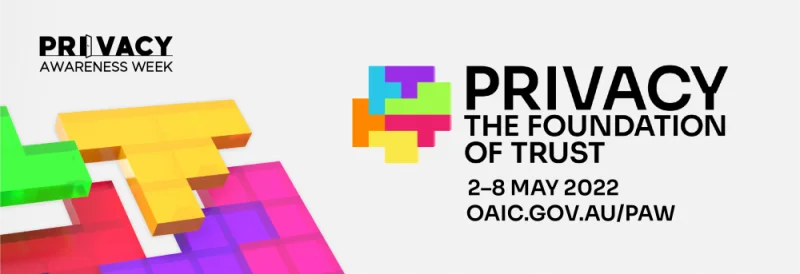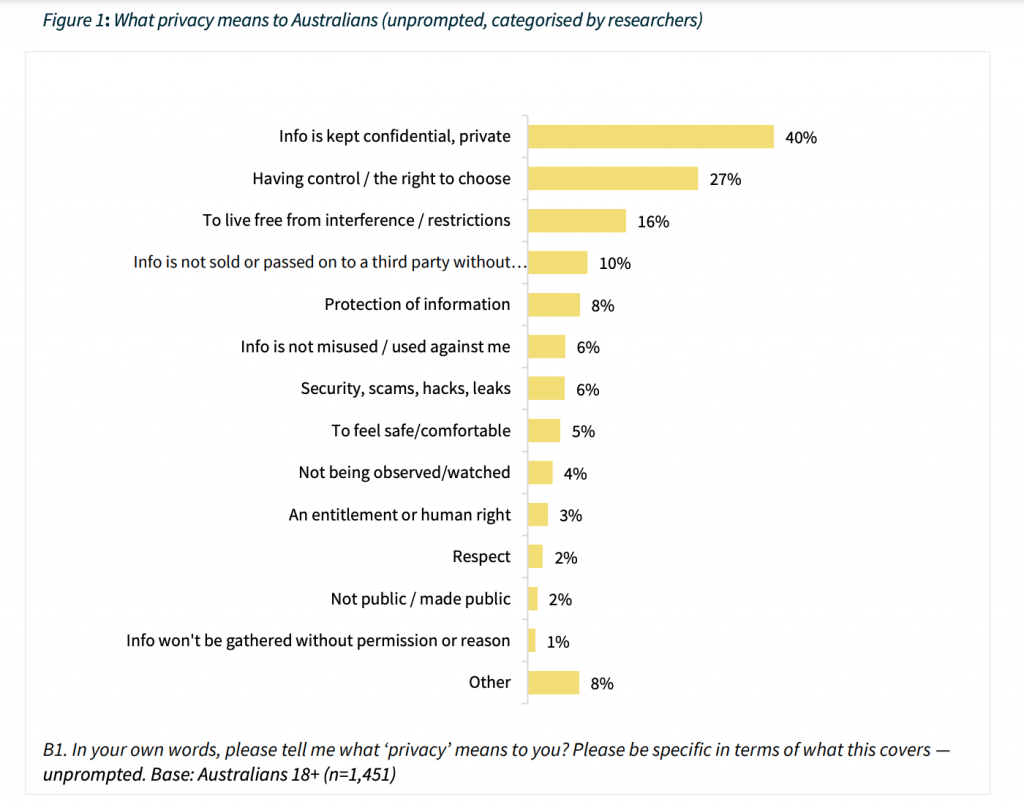
Privacy: Building the Foundation of Trust
“Distrust is now society’s default emotion”. This is the no. 1 Takeaway from the 2022 Edelman Trust Barometer Report. Research in Australia reflects these findings, showing that trust in social media companies, online retailers, telecommunications companies, and banks and financial institutions decreased between May 2020 and August 2021. With these findings in mind, this year’s Privacy Awareness Week Theme “Privacy: The Foundation of Trust” seems particularly apt. But how can companies build the foundations of trust with their customers?
The Foundation of Trust: What Does Privacy Mean for Australians?
The OAIC’s Australian Community Attitudes to Privacy Survey 2020 (the 2020 Survey) revealed the following factors that Australians consider important when it comes to privacy (amongst others):
- Information is kept confidential, private.
- Having control/ the right to choose.
- To live free from interference / restrictions.
- Information is not sold or passed on to a third party without consent.
- Protection of information.
- Information is not misused.
- Security, scams, hacks, leaks.
- Not being observed or watched.
- Information won’t be gathered without permission or reason.
Source: Australian Community Attitudes Towards Privacy 2020 – OAIC
Organisations looking to increase trust with customers (and access the competitive advantages that come with increased privacy) should consider their data practices in light of these customer expectations.
3 Steps to Increase Privacy & Build Customer Trust
Organisations can take the following three steps as a starting point to increasing privacy and building customer trust:
Avoid Dark Patterns
Dark patterns, now being referred to as deceptive design, are features and/or language used on websites and in apps that make it more difficult for users to provide informed consent about or otherwise manage their privacy.
This is some @darkpatterns bullshit, wtf surfshark, I got four or five various screens asking me to KEEP the auto-renew after this one with the same button style btw, omg. thanks to @Mewsitive for making me think to check my own renewal settings on surfshark. pic.twitter.com/jN8qvysIke
— Fandramon – #BasicIncomeNOW (@Fandramon) May 3, 2022
This Tweet highlights an example of a dark pattern. By checking a box outlining why they do not wish to proceed with auto-renewal. However, the more prominent button below encourages the user to ‘Keep Auto Renewal’, where they would typically expect neither button to be prominent or the ‘continue’ button to be more prominent.
Using deceptive design features like this erodes customer trust which, once lost, can be difficult to earn back. It’s best to avoid them if your goal is to build the foundations of trust with your customers.
Read more here: https://privacy108.com.au/insights/dark-patterns/
Always Obtain Proper Consent
Obtaining proper consent is critical for global privacy compliance, as well as meeting customer expectations and maintaining trust. To see the impact (and enforcement) of failing to obtain proper consents, check out our recent Privacy Fails blog post and our coverage of the Grindr breach.
As you can see, obtaining proper consent really is foundational to trust. It empowers customers to decide for themselves whether they’re okay with an organisation’s privacy and data handling practices.
Be Transparent About Your Data Practices
81% of Australians consider an organisation collecting personal information that doesn’t seem relevant to a transaction as a misuse. A good practice to avoid incurring badwill from customers who do not wish to supply unnecessary information is to always collect data with purpose. And where that purpose may not be clear, explain why you’re collecting the personal information.
You can include this information at the point of collection, to ensure it’s clear to the customers the collection impacts. But you should also include it in your privacy policy.
Australians want to be able to easily navigate and easily understand the privacy policies of organisations, but the 2020 survey reporting reveals that most readers can’t easily navigate or understand existing policies.
Interestingly, the 2020 survey also revealed that customers who did not understand the policy were more likely to act – including deleting an app, changing privacy settings, or not using a service.
To overcome this, organisations should:
- Use standard and simple language to explain privacy practices.
- Introduce the key elements of the privacy policy in the introductory paragraphs of the policy, in plain English.
- Consider using icons to visually indicate whether certain activities are undertaken.
- Detail what kind of personal information is collected and held, whether it is shared or sold, and how personal information is collected, used, held, and protected towards the beginning of the privacy policy.
- Include a simple explanation of a customer’s privacy rights.
See more tips for better privacy policies.
Build the Foundations of Trust with Privacy 108
Need assistance developing a transparent and clear privacy policy or customer-friendly privacy practices? Reach out! Our experienced privacy lawyers would love to help.

